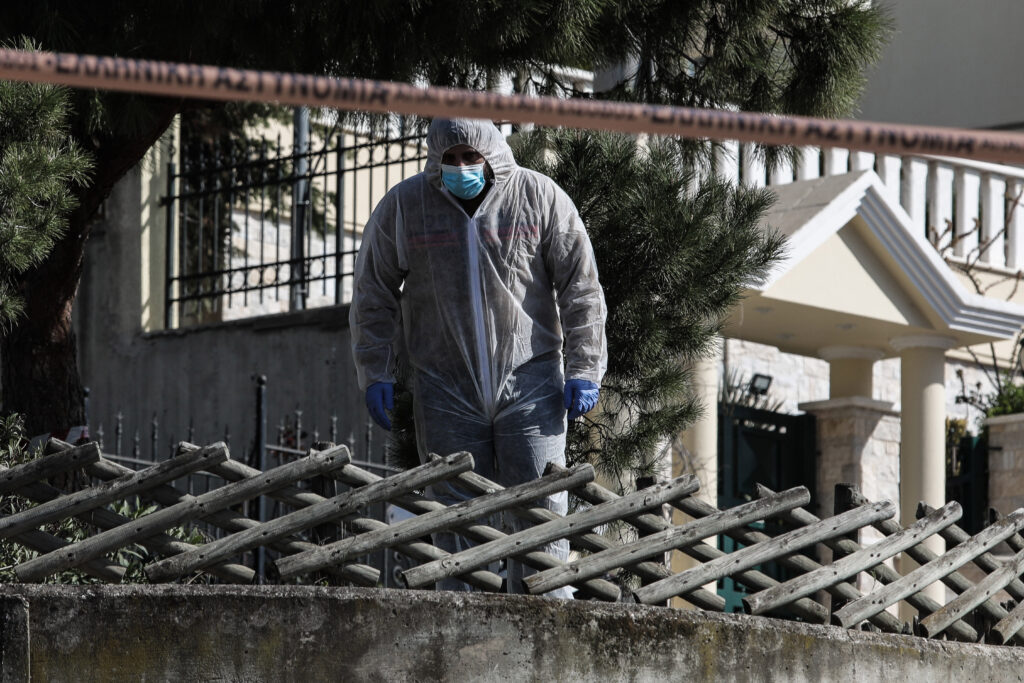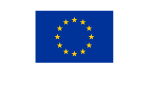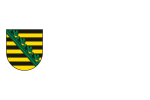By Jordan Higgins, ECPMF Press & Policy Officer
ECPMF
10 May 2022
No Comments

Journalists play a vital role and public service in covering protests and demonstrations. This has been brought firmly into the spotlight since the beginning of 2020 as waves of protests spread across Europe in response to COVID-19 containment measures and restrictions. Despite their essential role in informing the public, media workers are routinely attacked at protests for simply doing their jobs. Responding to the fact that Mapping Media Freedom revealed protests and demonstrations as the most frequent context in which media freedom violations have occurred in the past two years, we launched our #HereToReport campaign as part of the Media Freedom Rapid Response (MFRR) to raise awareness of the issues facing journalists who cover these events. During the campaign, we highlighted MFRR’s advocacy work related to this issue, we hosted an expert panel at the MFRR Summit 2022, and we cast a light on some in-depth statistics on the topic. Now we want to take a closer look at a specific issue within the broader topic of journalist safety at protests – police violence against photojournalists at demonstrations.
Photojournalists face a unique set of issues while reporting from demonstrations. Throughout this article, we will reflect on some of their experiences, hearing from photojournalists who have been attacked as a result of their work at protests. We will also take a look at some figures from Mapping Media Freedom that highlight the scale and severity of the issue in EU member states and candidate countries. Finally, we will hear from these journalists about what basic steps they believe can be taken to better protect journalists at demonstrations.
Looking beyond statistics
“I was shouting ‘I’m a journalist, I’m a journalist. You’re making a mistake’, though they were just dragging me.”
The Mapping Media Freedom Alert Explorer showcases hundreds of attacks against journalists at protests. One such attack concerned Bulgarian photojournalist Dimiter Kenarov, who was assaulted and detained by police officers while covering a protest in Sofia. Although he appeared keen not to overplay the seriousness of the incident in comparison to other such attacks, Dimiter’s retelling of the story paints a clear image of the dangers photojournalists can face at protests.
Working as a freelance photojournalist at the time of the attack, Dimiter was in Sofia, Bulgaria, covering a demonstration born out of a culmination of anti-Government and anti-corruption protests. As tensions escalated, Dimiter found himself between the police and the protestors:
“I was taking pictures of both parties from both sides and when [the police] got this order to attack, I ran back. But by that point they started using tear gas and all kinds of chemical agents for protesters, so I donned my gas mask and continued shooting [pictures].”
Despite being visibly identifiable as a journalist, with his gas mask “clearly marked PRESS at the front with big yellow letters”, Dimiter was grabbed by a police officer and pulled out of the crowd. He was handled roughly and taken to a side street away from the protest:
“They almost strangled me with my gas mask … I had to remove it so that I [could] breathe. And then they dragged me out of the crowd into a sort of side boulevard, which was dark and behind police lines.”
After this, the police officers threw Dimiter to the ground, climbed on top of him so he could not move, and kicked him in the head. He was then handcuffed while another police officer reviewed his press credentials. Dimiter was held on the pavement for approximately four hours before being moved to a police station where he was registered in the precinct’s visitors’ book as an invited guest – “I was invited – in [expletive] handcuffs and [with] a smashed face”.
Following a worrying trend of police violence and intimidation towards journalists at protests in Bulgaria during this period, partners in the MFRR wrote a letter to the Bulgarian Prime Minister, Interior Minister, and the Speaker of the National Assembly to raise their concerns. Dimiter’s case was also specifically raised in a statement from the MFRR calling for an investigation into the use of police force against journalists in September 2020.

Unfortunately, such violations are not unique to Bulgaria. This attack is emblematic of a wider issue facing journalists covering protests in Europe. Since its formation in March 2020, the MFRR has issued statements and open letters in response to police violence or undue restrictions against photojournalists covering protests in Poland, Greece, Italy, Serbia, Slovenia, and Germany. As well as this, violations against photojournalists covering protests carried out by police or state security were recorded in a further eight EU member states or candidate countries since the beginning of 2020. Adding to this, the MFRR partners published statements expressing concern about harassment of journalists at pandemic-related protests and in response to an increasingly hostile climate for those working in this context.
A double-edged sword — the perils of photojournalism at protests
The figures from Mapping Media Freedom show that photojournalists are not alone in facing these attacks — media workers of all types are similarly affected — but they do face a unique set of issues while covering protests. Reporting from a major demonstration while carrying camera equipment is a double-edged sword, as emphasised by Dimiter, who reflected on his past experiences working in hostile environments as both a photojournalist and print journalist:
“In an environment where you want to be identified as a journalist, yes, it’s better to be a photojournalist, especially if you have a professional camera. It shows that you’re there, you’re committed, you’re serious, and you’re identified. In situations where you don’t want it to be noticed that you’re a journalist, being a photojournalist is obviously a downside.”
Another unique issue facing photojournalists in this context was raised by Italian journalist Cristina Pantaleoni of GVpress in an interview for an upcoming episode of the MFRR in Focus Webinar:
“Unluckily, the video camera has a sort of a kamikaze effect. It is a filter between you and the other person and it pushes you forward. You don’t sense danger, but [it] is there.”
Good photojournalism brings audiences close to the action. While print journalists are often able to maintain some degree of physical distance between themselves and the police or protestors, photojournalists often push beyond this. Combining this with the fact that they are easily identified makes photojournalism during protests a particularly dangerous profession.
The consequences of these violations have a life beyond the protests in which they occur. They can have an unsurprising chilling effect on journalists who may be reluctant to put themselves in harm’s way once again. Not only does this have a major impact on the lives and livelihoods of the journalists themselves, but also on the wider press freedom climate and, in turn, the democratic values of society. The former point was highlighted by Cristina Pantaleoni, whose colleague was recently attacked in Italy during an anti-vaccine protest:
“He was punched in the face, deviating his nasal septum and breaking his cheekbone. He was compelled to stay home, and for a freelancer, this means remaining without an income.”
Journalists play a vital role at protests, by informing the wider public of ongoing events and social and political discourse — ensuring the world’s eyes are on the demonstrations. Not only do these attacks restrict journalists’ ability to cover protests at that particular moment, they also weigh on their minds and have the potential to lead to self-censorship and a reluctance to cover protests in future; a point illustrated in Dimiter’s reflections:
“I understand these kinds of things happen sometimes, but it definitely gives me second thoughts. It will give me a second thought if I’m covering another protest.”
A pervasive problem — statistics from Mapping Media Freedom
Since January 2020, 397 media freedom violations have been recorded at protests and demonstrations in European Union member states and candidate countries, according to Mapping Media Freedom. Of these alerts, 191 affected photojournalists or camera operators working at protests. The statistics gathered on Mapping Media Freedom provide a valuable insight into the issue of threats to journalists’ safety at protests. To fully understand the scale of this issue — beyond individual cases — it is worth reviewing where these attacks take place and who the key perpetrators are.
Location of attacks
These violations took place in 14 EU member states or candidate countries (and the UK, which until recently was part of the region covered by the MFRR): Albania, Bulgaria, Finland, France, Germany, Greece, Italy, the Netherlands, Poland, Serbia, Slovenia, Spain, Turkey, and the United Kingdom.

Source of attacks
The majority of the attacks against photojournalists at protests (135) recorded since the beginning of 2020 were carried out by private individuals — be they protestors or onlookers. This is followed by police and state security (51). Considering the police’s fundamental role of keeping protestors and reporters safe at demonstrations, the high number of violations for which they are responsible is alarming.
Protection, communication, and education — possible solutions going forward
Given that these violations have been recorded across Europe, and during protests focusing on a range of issues across the political spectrum, devising solutions is a difficult task. What might work to prevent police violence against journalists covering protests in Greece may not apply effectively to the same situations in Germany or Serbia.
One possible solution links to educating police about the role of journalists and how they should be treated at demonstrations. Reflecting on his own interactions with police at protests, Dimiter noted one potential path forward in Bulgaria:
“I would say that maybe some of the violence is due to people not knowing how to treat journalists … especially some policemen, the younger ones … Maybe like seminars or briefings for police before protests, to explain to them ‘You can do this and that, and you cannot do this and that. And if you see a journalist, you have to let them through; you have to let them do their job; you cannot apply any sort of violence against them’. I think this would be helpful in the Bulgarian case if there were these sorts of briefings or preps.”
Although applied specifically to the Bulgarian media freedom environment in this quote, this point has been considered elsewhere as an important step forward in improving the safety of journalists and media workers at protests. The European Commission’s recommendation on ensuring the protection, safety, and empowerment of journalists and other media professionals in the European Union states:
“A modern framework for protecting journalists should include the continuous development of competences and skills for all actors relevant to the protection of journalists and other media professionals. Training activities for law enforcement authorities can increase the awareness and attentiveness of police forces with regard to ensuring safety of journalists and other media professionals” (Rec. 18).
The value of such training is emphasised further in a later recommendation from the Commission:
“Operational solutions and training are therefore needed to ensure journalists’ safety during protests, diminish the risks of potentially unjustified or disproportionate actions and to ensure effective protection by law enforcement forces” (Rec. 21).
In the same vein, although focusing on educating journalists prior to demonstrations, Peter Smets, President of the European Federation of Police Unions, also outlined potential solutions during the #HereToReport panel at the MFRR Summit 2022:
“For us, the solution is to communicate; to do briefings before demonstrations for the press, to do debriefings after for the press people on the field.”
Although focusing on two different parties, these solutions put forward on behalf of both journalists and the police place communication and education at the heart of the conversation.

Peter Smets added the importance of ensuring journalists can be clearly identified as a further solution. Although there are obvious merits to this, it is not always effective as evidenced in Dimiter’s case. Indeed, as illustrated also by the removal of NOS logos from Satellite News Gathering (SNG) trucks and radio cars in the Netherlands for employees’ safety, it is clearly often not desirable or even safe.
Solutions put forward by Cristina Pantaleoni focused more on protecting the journalists and punishing the perpetrators, ensuring the responsibility is not on journalists alone to keep themselves safe:
“There is the right to report, isn’t there? Why must I refrain from doing my job? Is it dangerous? Protect journalists who do their job, do not prevent them from doing it! And punish those who commit crimes against journalists who are simply doing their job. They’re there in the street for no other reason than to simply do their job.”
Solutions to the issue of journalist safety at protests are not clear-cut. What is clear, however, is the severity and pervasiveness of violence against media workers in this context. Since its formation in March 2020, the partners of the Media Freedom Rapid Response have published 30 statements, open letters, or recommendations related to the safety of journalists at protests — more than one every month. The statistics offered by Mapping Media Freedom are alarming and the personal stories told by journalists such as Dimiter Kenarov illustrate exactly how these attacks affect journalists on the ground.
Central to any functioning and pluralist democracy is the right to free assembly, and with that comes the public interest in journalists being able to cover demonstrations freely and safely. As the most frequent context in which media freedom violations occur in Europe, it is crucial that going forward more efforts are made to guarantee journalists’ safety at protests, ensuring they are able to work freely to inform the public and operate as a safeguard for democracy.

Latest News:
- Feindbild Journalist:in 8: Angst vor der Selbstzensur
- Georgia: MFRR partners strongly condemn new attempts to introduce a “foreign agent” law
- Safety and justice: demanding accountability for attacks against journalists in Serbia
- Three years later: Still no justice for murdered Greek journalist
- Slovakia: Independence of Slovakia’s leading TV news channel must be protected
Read news by categories:
Find news by tags:
Related news
Press release
Feindbild Journalist:in 8: Angst vor der Selbstzensur
Die Zahl der physischen Angriffe auf Journalist:innen stieg im vergangenen Jahr im Vergleich zu 2022 wieder an. Nach 56 Fällen im Jahr 2022 verifizierte das ECPMF für 2023 69 Fälle von physischen Angriffen auf Journalist:innen.
READ MOREStatement
Georgia: MFRR partners strongly condemn new attempts to introduce a “foreign agent” law
The undersigned media freedom organisations strongly condemn Georgia’s ruling party's renewed effort to pass a Russian-style foreign agent law.
READ MOREStatement
Safety and justice: demanding accountability for attacks against journalists in Serbia
Commemorating 25 years since the brutal murder of Serbian journalist Slavko Ćuruvija, media freedom organizations unite to condemn continued impunity in this case.
READ MOREGeneral
Three years later: Still no justice for murdered Greek journalist
Three years have elapsed since the assassination of Giorgos Karaivaz, a veteran Greek crime reporter. Today, the undersigned members of the Media Freedom Rapid Response (MFRR) commemorate his death and renew demands on the Greek authorities to redouble their efforts to bring the perpetrators to justice.
READ MOREThreat
Slovakia: Independence of Slovakia’s leading TV news channel must be protected
ECPMF is deeply alarmed by the actions of the Slovak government towards Slovakia's leading commercial broadcaster, TV Markíza.
READ MOREStatement
CoE’s Recommendation represents a significant milestone in the fight against SLAPPs
CASE welcomes the Council of Europe’s Recommendation on SLAPPs, approved by the Committee of Ministers on Thursday 4 April.
READ MORESupport Mediafreedom
 All content available on the ECPMF website is licensed under a Creative Commons Attribution-NonCommercial-ShareAlike 4.0 International License.
All content available on the ECPMF website is licensed under a Creative Commons Attribution-NonCommercial-ShareAlike 4.0 International License.
ECPMF is financed by various project funders
Menckestr. 27
04155 Leipzig / Germany
Tel: +49 (0) 172 367 499 0
Fax: +49 (0) 341 562 96 63
E-Mail: info@ecpmf.eu
www.ecpmf.eu
© Copyright 2022 – ECPMF
European Centre for Press and Media Freedom



